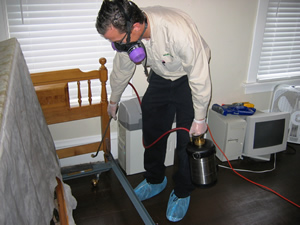Unveiling the Power of Bio-Fungicide Sprays in Targeting Bed Pest Infestations Naturally
In the realm of pest control, the elusive and relentless nature of bed pest infestations poses a substantial challenge for specialists and home owners alike. Traditional approaches frequently entail extreme chemicals that can be damaging to health and the setting. An encouraging alternative has emerged in the type of bio-fungicide sprays. These natural remedies use the power of valuable fungis to battle bed insects successfully. As we dig right into the complexities of their system of action and the engaging benefits they offer, a clearer understanding of their possibility in resolving this common problem unravels.
Bio-Fungicide Sprays: An All-natural Option
When combating bed pests, bio-fungicide sprays supply an all-natural option that is increasingly acquiring popularity as a result of their performance and eco-friendly nature. Bio-fungicides are stemmed from naturally occurring organisms such as fungi, bacteria, and other organic resources. These sprays work by targeting the bed bugs' exoskeleton, disrupting their development and recreation cycle, inevitably causing their death.

Moreover, bio-fungicide sprays are less likely to add to chemical resistance in bed insect populations, as they use different settings of activity that are not quickly adjusted to by these insects - bed bug treatment. This makes them a useful tool in integrated pest administration strategies aimed at eliminating and regulating bed pests in a lasting fashion
Understanding Bed Pest Infestations
What factors contribute to the spread of bed insect invasions in city atmospheres? Bed insect problems flourish in urban setups because of several crucial factors. One substantial contributor is the high populace density in cities, which gives adequate opportunities for bed bugs to spread out from one place to another through human activity. The regular travel and motion of individuals within and between city locations additionally play an essential role in the fast circulation of bed bugs. Furthermore, the prevalence of multifamily real estate units and shared living spaces in metropolitan atmospheres creates interconnected networks that help with the spread of bed insects in between structures or systems.
Furthermore, the boosted mobility of individuals and the widespread usage of secondhand furnishings and goods in urban settings can present bed bugs right into new settings, fueling infestations. Lack of awareness and proper education about bed insect avoidance and control actions even more intensify the spread of invasions in city areas. Understanding these factors is essential for developing reliable approaches to combat and protect against bed bug infestations in metropolitan environments.
System of Bio-Fungicide Action

Moreover, some bio-fungicides function by damaging the fungal cell membrane layer, bring about leakage of necessary mobile parts and creating the cell to collapse. This disruption of the cell membrane stability jeopardizes the fungal cell's stability and adds to its death. Additionally, bio-fungicides check my site can generate oxidative use this link tension within the fungal cell, setting off a waterfall of hazardous responses that finish in cell death.
Benefits of Making Use Of Bio-Fungicides

One more advantage of bio-fungicides is their ability to combat pesticide resistance. Over time, pests like bed bugs can create resistance to chemical pesticides, making them ineffective. Bio-fungicides use a different setting of action, making it less most likely for pests to develop resistance and making sure lasting effectiveness in pest control. Furthermore, bio-fungicides have marginal to no recurring effects on the environment, minimizing the threat of damaging chemicals sticking around in the ecological community. On the whole, the benefits of making use of bio-fungicides in pest management expand beyond just regulating fungal conditions, offering a effective and sustainable alternative to standard pesticides.
Application Tips for Effective Outcomes
To attain optimum outcomes when making use of bio-fungicide sprays for bed insects, appropriate application strategies are important for reliable bug control. Target these areas directly with the bio-fungicide spray, focusing on splits, crevices, and other hiding areas where bed insects investigate this site are likely to stay.
Furthermore, it is recommended to adhere to the producer's directions concerning the dilution proportion and application regularity to make the most of the bio-fungicide's efficacy without triggering harm to people or pets. Uniformity in application is essential to breaking the bed insect life cycle and stopping reinfestation. Furthermore, take into consideration revolving different kinds of bio-fungicides to stop the growth of resistance in bed bug populations.
Lastly, it is necessary to preserve cleanliness and declutter the treated locations to eliminate potential bed pest hiding spots and assist in the bio-fungicide's performance. Regular tracking and reapplication, if essential, will certainly aid ensure long-term success in eliminating bed pests normally.
Verdict
To conclude, bio-fungicide sprays supply an all-natural option for targeting bed pest problems. By recognizing the device of bio-fungicide activity and the benefits of utilizing these items, people can properly battle bed pests without using dangerous chemicals. Following proper application tips can lead to effective outcomes in handling bed insect problems in a safe and environmentally-friendly fashion.
Furthermore, bio-fungicides have revealed appealing results in properly getting rid of bed insect infestations, supplying a viable option to traditional techniques.
To achieve optimum outcomes when utilizing bio-fungicide sprays for bed insects, appropriate application strategies are essential for reliable parasite control. Additionally, consider rotating different kinds of bio-fungicides to prevent the growth of resistance in bed bug populations.
In final thought, bio-fungicide sprays use a natural solution for targeting bed insect infestations. By understanding the system of bio-fungicide activity and the advantages of making use of these items, individuals can effectively fight bed pests without the use of hazardous chemicals.